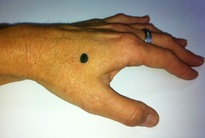 The warmer weather has signaled that spring has well and truly arrived. And unfortunately for some this means the arrival of allergy and hay fever season. The unseasonably warm, dry weather has meant early high pollen counts and along with strong winds means more grasses, dust and pollution in the air also. Hay fever, or allergic rhinitis, is an allergic response to inhaled allergens such as pollen, grass, dust, mould, and animal fur, which results in inflammation of the nasal airways. The symptoms of hay fever include sneezing; a blocked or runny nose; red, itchy, watery eyes; sinus pressure and headaches. Advice for managing hay fever will generally start with avoiding exposure to the allergens as much as possible. This might mean staying indoors on days when pollen counts are high, avoiding contact with animals, and being selective with the type of plants that you place in your garden. On high pollen count days you can also avoid hanging clothes washing outside on the line and make sure you wash your hair to remove dust and pollens. Also try wearing wrap around sunglasses to protect your eyes and using an ointment on your nostrils like pawpaw ointment to help prevent pollens getting into the airways. Antihistamines, corticoid nasal sprays, decongestants and eye drops are the usual conventional treatments for hay fever. In some cases a program of desensitisation injections may be recommended. There are many natural alternatives for treating and managing hay fever. There are vitamin supplements that can be used, herbs, essential oils, foods to include or avoid in your diet. Acupuncture and acupressure have been effectively used for thousands of years. If you are unable to get to an acupuncturist you can perform acupressure on yourself to help relieve the symptoms of hay fever. One of the best acupoints to use is large intestine 4. This powerful point works on all of the symptoms associated with hay fever, including the assocaited sinus pain and headaches. In fact it can be used for any pain at all! The point is located on the hand between your thumb crease and hand (see the picture to the right). Start with your thumb against your hand and find the highest point of the mound next to the thumb crease. Hold this point with your opposite thumb. Keep holding the point and move your thumb back away from your hand as shown in the picture. If you put some pressure on the point toward the hand you may find it to be tender. Rub the point for 30 seconds then gently hold it for 5-10 minutes. You can use the point on either hand as often as you need. CAUTION: Do NOT use this aupoint during pregnancy.
0 Comments
Your comment will be posted after it is approved.
Leave a Reply. |
AuthorWrite something about yourself. No need to be fancy, just an overview. ArchivesCategories
All
|

 RSS Feed
RSS Feed
